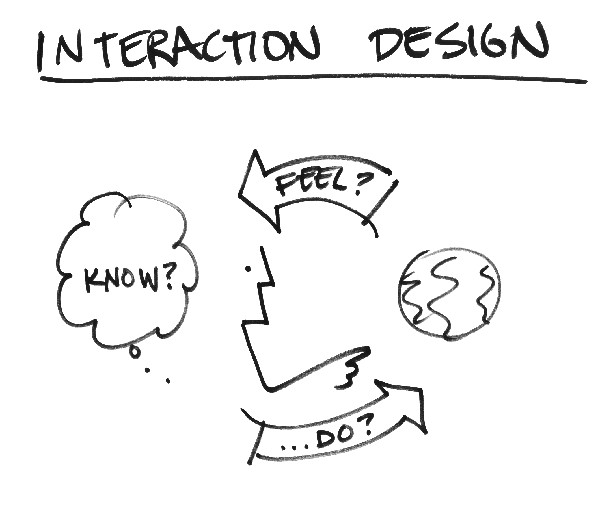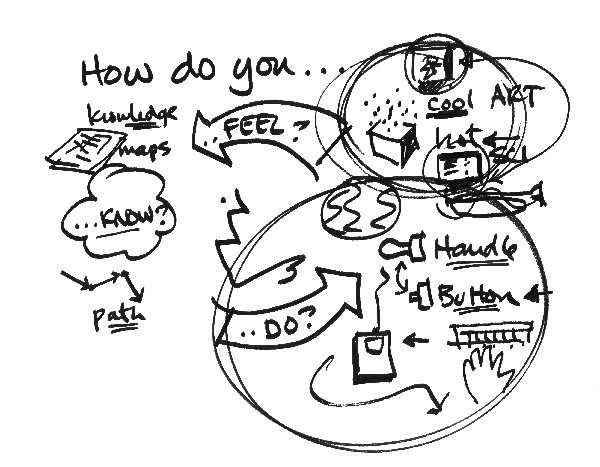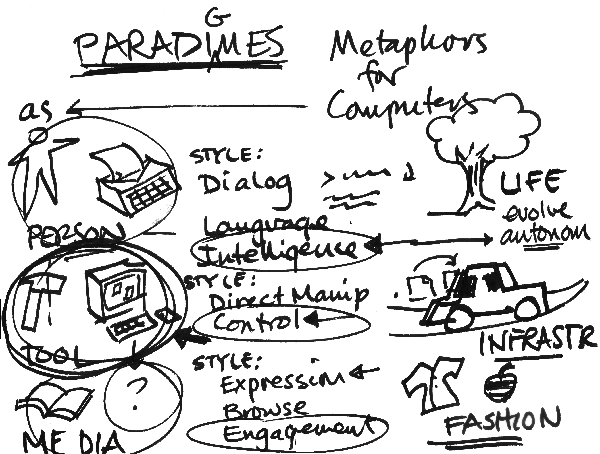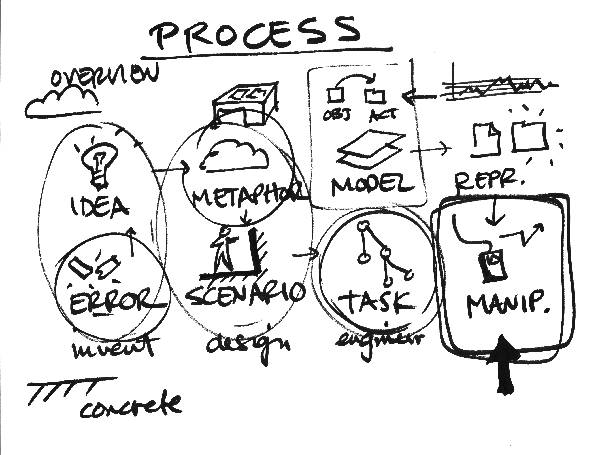
Interaction design is design for human use. It involves
answering three questions:
How do you do? What sort of ways do you affect
the world: poke it, manipulate it, sit on it?
How do you feel? What do you sense of the world
and what are the sensory qualities that shape media?
How do you know? What are the ways that you learn
and plan (or perhapse, how we want you to think)?

One of the important choices for "How do you do"; is
between HANDLES and BUTTONS.
Handles are better for continuous control (e.g. trombone)
Buttons are better for discrete control (e.g. piano keyboard)
Handles leave you in control (e.g. opening a car door).
Buttons are more likely to trigger something automatic
(e.g. opening an elevator door).
One choice for "How do you feel?" is McLuhan's "hot" vs
"cool".
Hot media like print are more authoritative and exact.
Cool media like cartoons and television are fuzzy and
incomplete they invite more participation.
One choice for "How do you know?", is between MAPS and
PATHS.
Paths are good for beginners just tell me step by step
what to do.
Maps are good for understanding alternatives they take
longer to learn but are more robust.
Paths are good for expert skill; they can be very efficient.

Here are two vending machines. One presents a PATH-like interface.
One is more like a MAP.
Which do you prefer?
Which is better for the vendor?
Which is faster?
What are the failure and recovery possibilities?

What is a computer? Various metaphors have organized entire
careers.
Such powerful metaphors are called "paradigms". They motivate
the central questions asked. They help us understand the STYLE of interaction.
Understanding competing paradigms helps us understand what various people
consider a "good" interaction design.

At least eight distinct phases can be identified in the
interaction design process. They range from the concrete instance (path-like)
to the general overview (map-like) and from invention to presentation.





